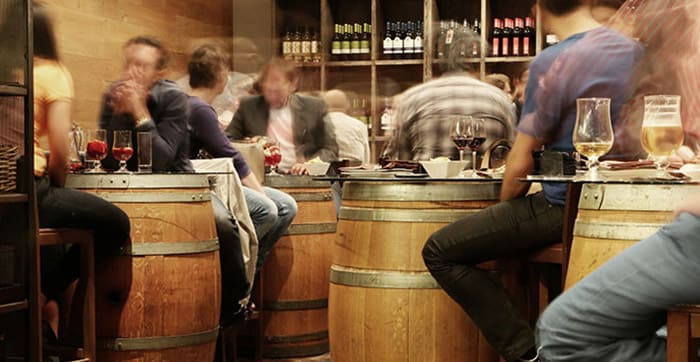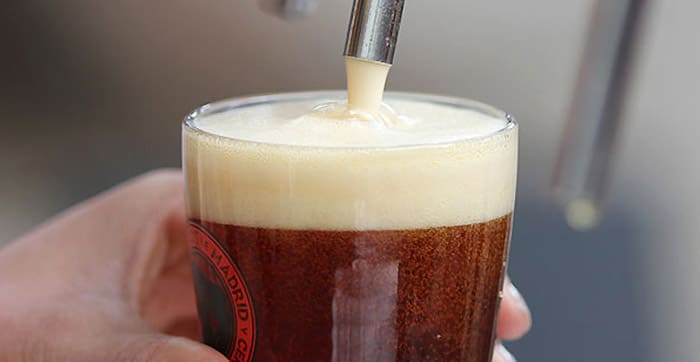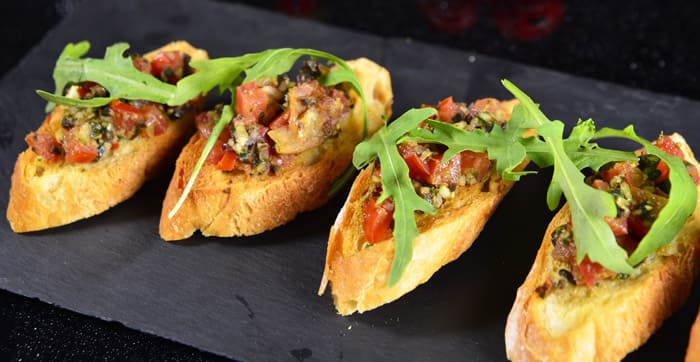An introduction to tapas
The simplest, yet arguably the best, Spanish food
In any conversation revolving around the subject of Spanish food, you’ll doubtless hear people (quite justifiably) raving about dishes like paella or telling you that the tortilla (Spanish omelette) they had in Barcelona was second-to-none, or that it’s unnatural to have cold soup like gazpacho. The term tapas might also come up several times… but what are tapas, really?
This post will explain what they are, how they got their name, why they are undoubtedly a drinker’s best friend and – finally and most importantly – where to find tapas bars and restaurants on the Costa del Sol.
What are tapas?
According to the Real Academia Española (RAE), the most authoritative philological reference point for Spanish speakers (equivalent to our Oxford English Dictionary), a tapa is “a small portion of any food item served as an accompaniment to a drink”1.

Upon reading this translation for the first time, you may be forgiven for thinking this is the definition of, well… food. If their definition is so generic, how can it be possible to really define tapas?
After all, you may say: “I often pair my dinner with wine and I’m not having tapas for dinner”. And you would be right. “I often accompany ten pints of lager with a kebab… is that a tapa?” is another fair question.
However, to get to the heart of the tapas conundrum you must understand the history of this popular Spanish food.
The origins of tapas: the concept
The story I’m about to weave was told to me several years ago by a local historian and tour guide in Madrid, so if you’ve heard a different variation I apologise in advance. Let’s set the scene…
Back in the middle ages, farming and working the land was Spain’s principal economic activity. Obviously, working long hours under the hot Spanish sun was very debilitating for these labourers, who began to demand better working conditions.
Luckily, the then king was sympathetic to the needs of his people and new rules were introduced to incentivise manual workers. Landowners would be forced to offer their staff an extra few coins or a nice cold, fresh beer at the pub at lunchtime by way of refreshment. I think you can tell which one they went for.

Seeing that productivity in the afternoons had plummeted since the inception of the new law – an inevitable consequence of liquid lunches – the king needed to take further action to avoid a nationwide agricultural recession.
Instead of rescinding the law he’d introduced, the good king simply obliged all bar owners to serve some complimentary food with the beers they were plying the farmers with. That way, they wouldn’t go back to work drunk and thus the concept of a free snack to go with your drink was born.
Only it didn’t have a name.
The origins of tapas: the name
Calling a bit of free pub grub a tapa happened very much by chance several years later.
On an official visit to Cádiz, the then King Alfonso XIII was a bit peckish and went to a tavern and ordered himself a generous portion of local Spanish food and a big goblet of beer (are you noticing a pattern here?).
The weather was exceptionally blustery that day and, all of a sudden, a huge gust of wind blew dust, sand and dirt in from outside, threatening to spoil the king’s luncheon. Like an Iberian lynx, the proprietor of the establishment leapt to protect his king’s beer, covering it with a slice of Spanish ham from the bar, so that none of the crud from outside could get in.
Naturally, the king asked, “¿Qué es eso?” (“What is this?”), to which the bar owner gallantly replied, “es una tapa [para su cerveza]” (“It’s a cover [for your beer]”). The word tapa, therefore, literally translates as a lid or cover and it was only after that incident – or so the story goes – that the term entered into popular culture and became common parlance for a nibble to accompany your alcoholic beverage.
Spanish food epitomised
So, now you’ve heard (one version of) the story, you’ll be wanting the practical answer to the question: “What are tapas?”. As you’ve probably gathered, they are not full portions of food, but varied savoury appetizers that you’ll gobble up in no more than a few bites.
Many tapas have a slice of baguette bread as their base and are topped off with a cold cut like salami or chorizo (spicy sausage), jamón serrano (Spanish ham) or lomo (a pork cut), along with a smattering of olive oil.
Other popular Spanish tapas include patatas bravas (potatoes with a slightly spicy sauce), albóndigas (meatballs), slices of cheese (especially manchego and other regional variants), olives, anchovies, fried seafood, although the list of possibilities is virtually endless.

The general rule of thumb is that an establishment that calls itself a “true” tapas bar should not charge extra for this food, exactly as the age-old law dictates. However, the more commercial or tourist-focused bars tend to have a separate tapas menu where you can order lots of different small dishes as opposed to a massive plate just for yourself… and, to be honest (and unfortunately, in my view), this type of place has become the rule and is no longer the exception.
Remember: “sharing is caring” is a key tenet in Spanish food culture, so ordering for the table is preferable to ordering for each diner individually. Hence why the verb and action of tapear (going for tapas) is deeply engrained in Spanish culture, more or less wherever you’re from.
In fact, the Spanish take it so seriously that there is even a nationwide tapas competition, which is now into its fifteenth year and will be held in Valladolid in northern Spain from 4th - 6th November!2
Can I find tapas bars on the Costa del Sol?
The simple answer is yes, of course. However, what I would recommend is an element of caution.
The Costa del Sol is perfectly set up for the tourist industry and expats alike, meaning restaurant businesses in its lively towns and cities cater for all tastes and palates.
In any given international hub, be it Málaga city centre, the port at Benalmádena, Fuengirola seafront, the Marbella promenade, Puerto Banús, Estepona or Sotogrande, you will find a huge variety of international cuisine. Italian, French, Belgian, Indian, Chinese and Scandinavian food, Argentinian steak houses, sushi restaurants, vegetarian and vegan eateries and even temporary food trucks will all be more prominent, perhaps, than local restaurants serving authentic Spanish food.
But do not despair! If you look hard enough, you will find a vast array of typical tapas bars in all of the above places, while your experience will be even more traditional the further inland you go. After all, the further you travel from the flashing neon lights of the Coast’s paseo marítimo, the more of a village feel you will encounter and – in many cases – the better the local produce will be.
Recommended: Ask a local!
Another tip is to ask a Spaniard. For expats living in southern Spain (myself included) it’s easy to get drawn into eating pizza and curry every day, but if you step back, resist the temptation and speak to a local about their favourite Spanish food on the Costa del Sol, they will have hours’ worth of material and suggestions for you.
After all, they know the area inside and out and will recommend authentic restaurants in nooks and crannies that the ordinary tourist – and unadventurous expats, for that matter – would never find.
A friend of mine, schooling me on tapas bars and general Spanish food culture, once told me that often the simplest and most innocuous-looking places are the ones that serve the best tapas. Forget silky tablecloths, softly-cushioned chairs and a printed menu lit up on a stand outside, he said. Go to where the locals eat and don’t worry about being the only foreigner and getting by with your imperfect Spanish.
I hope this was a useful beginners guide to tapas! Have you heard a different story about their origins? And what's your favourite Spanish food? As always, I'd love to hear from you in the comments below!
Sources:
1 http://lema.rae.es/drae2001/srv/search?id=OScaIug7ODXX2G056iWD%7CXlkegTAM2DXX2MuqTRtl
 en
en




 Vlaams-Nederlands
Vlaams-Nederlands
0 Comments
Leave a Comment
DISCLAIMER
The opinions and comments expressed by contributors to this Blog are theirs alone and do not necessarily reflect the views of VIVA Homes Under the Sun Ltd, any of its associated companies, or employees; nor is VIVA to be held responsible or accountable for the accuracy of any of the information supplied.
Have you got something to say?